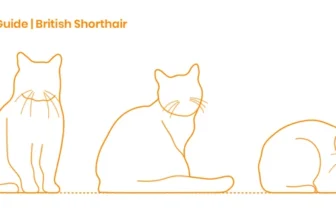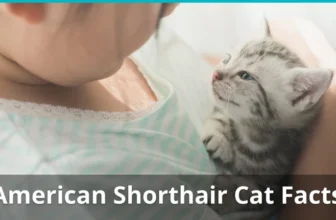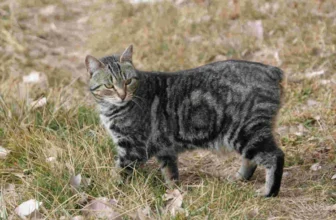Are you considering getting an American Shorthair cat? Are you worried about how they will interact with your other pets? Cats can be very independent animals, and while American Shorthair cats are known for their friendliness and gentle nature, it’s important to introduce them to other pets properly. In this article, we will explore the factors that affect how American Shorthair cats interact with other pets and provide you with tips and tricks to help your furry friends get along. Whether you have other cats, dogs, rabbits, birds, reptiles, or fish, we’ve got you covered. So let’s dive in and learn how to make your home a happy and harmonious environment for all your pets!
What Is an American Shorthair Cat?
The American Shorthair cat, also known as ASH, is a domestic cat breed that originated in the United States. These cats are medium to large in size, with a muscular and sturdy build. They have a short, thick coat that comes in a variety of colors and patterns. American Shorthair cats have round faces and ears, and their eyes are large and expressive.
ASH cats are known for their friendly and sociable temperament, making them great pets for families and individuals alike. They enjoy spending time with their humans and often form strong bonds with their owners. These cats are also playful and energetic, and they love to play with toys and engage in interactive playtime.
One of the reasons why American Shorthair cats are so popular as pets is because they are highly adaptable. They can thrive in a variety of living situations, from apartments to houses, as long as they receive proper care and attention. They are also adaptable to different types of families, from singles to families with children.
ASH cats are generally known for their calm and laid-back personalities. They are not prone to aggression or excessive meowing, and they tend to be independent in nature. However, they still enjoy human company and can often be found cuddling up with their owners.
American Shorthair cats are a popular breed known for their friendly and sociable temperament, playful nature, and adaptability. They are ideal pets for a variety of living situations and families. To learn more about the personality traits of this breed, please visit /american-shorthair-cat-personality-traits/.
Factors Affecting how American Shorthair Cats Interact with Other Pets
Factors Affecting how American Shorthair Cats Interact with Other Pets
A significant factor affecting how American Shorthair cats interact with other pets is their temperament. Generally, American Shorthair cats have a friendly and adaptable personality. They are laid-back, playful, and social cats that love interacting with their family members, whether they are humans or other pets in the house. They are usually not territorial and can adjust to different pets’ presence in the house, making them great additions to households with other pets.
Another factor is the American Shorthair’s past experiences with other pets. If the cat has had positive encounters with other animals, chances of them getting along with any new pets are high. But if they have had bad experiences, such as being attacked by a dog, it may affect how they respond to other dogs in the future.
The age of the American Shorthair and the other pets in the house is also relevant. Younger American Shorthairs that have grown up with other pets may be more accepting of them than adult cats that have not been exposed to other pets. Similarly, older animals introduced to each other are often less accepting and less willing to share their territory.
It is important to note that while American Shorthair cats are generally friendly and adaptable, every cat is unique, and some may have personality traits that make it difficult for them to integrate well with other pets. For example, while some American Shorthairs may be sociable with dogs or rabbits, they may not react well to birds or reptiles.
Several factors impact how American Shorthair cats interact with other pets. Their temperament, past experiences, age, and exposure to different pets can all influence how well they will get along with other pets in the house. While American Shorthair cats are usually adaptable, it is essential to consider each cat’s personality and experiences when introducing them to other animals friendly with American Shorthair cats.
How American Shorthair Cats Get Along with Other Cats
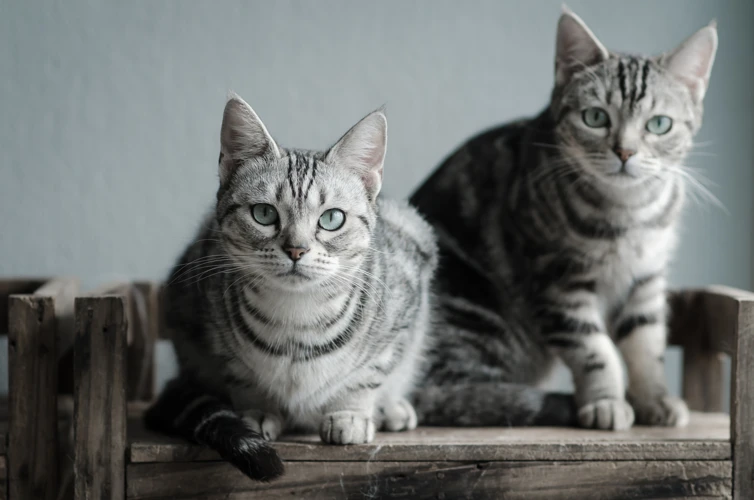
When it comes to introducing American Shorthair cats to other pets, it’s essential to understand how these cats interact with different species. In this section, we will focus on how American Shorthair cats get along with other cats. As one of the most popular cat breeds in the United States, American Shorthairs have a reputation for being both playful and calm. However, every cat is unique, and there are certain factors that can affect how they interact with other felines in the household. Let’s explore the ins and outs of introducing American Shorthair cats to other cats and ensuring they have a healthy relationship together.
Introducing an American Shorthair Cat to Another Cat
Introducing an American Shorthair Cat to another cat can be a difficult process, but it can be done successfully with the right steps. The first step is to ensure that both cats have their separate spaces in which they can retreat to and feel comfortable. This can be done by setting up separate food bowls, litter boxes, and beds.
It is important to note that each cat should have their own designated space and that these spaces should not be shared. This will ensure that both cats feel safe and secure and can adjust to each other’s presence without feeling threatened.
Once the separate spaces have been set up, it is time to begin the introduction process. The best way to do this is to allow the cats to smell each other’s scents before the actual introduction. This can be done by swapping blankets, toys, or scratching posts between the two cats.
This process should be repeated over several days or weeks to ensure that the cats become familiar with each other’s scent.
After the cats have become familiar with each other’s scent, it is time for the actual introduction. This should be done in a neutral space, such as a room that neither cat has been in before. Before the introduction, both cats should be fed and played with to ensure that they are calm and relaxed.
The cats should then be introduced slowly and carefully, with both owners present and ready to intervene if necessary. It is important to allow the cats to dictate the pace of the introduction and to never force them to interact if they are not ready.
If the introduction is successful, the cats can be allowed to spend more time together under supervision. If both cats show signs of being uncomfortable or aggressive, it may be necessary to separate them and try the introduction process again at a later time.
It is important to be patient and not rush the introduction process. With time and proper introductions, American Shorthair cats can peacefully coexist with other cats in the household.
For more information on American Shorthair cats, check out our article on /calm-laid-back-american-shorthair-cats/.
Supervise the Cats’ Interactions
Supervising the interactions between American Shorthair cats is vital to ensure a harmonious living environment. It is crucial to be alert during the first few encounters between the felines to maintain their safety. You should look out for any warning signs of aggression or hostility, such as hissing, growling, and raised fur.
One way to supervise their interaction is through the use of a visual barrier. This can be in the form of a baby gate, screens or different rooms to keep them apart while they get used to each other’s presence. Distracting the cats with toys or treats can help to redirect their focus from each other.
Table: Supervising American Shorthair Cats Interactions
| Method | Advantages | Disadvantages |
|---|---|---|
| Use of visual barriers | – Safely separates the cats – Prevents physical fights |
– Can be expensive – Limits the cats’ ability to interact with each other |
| Distraction with toys or treats | – Redirects the cats’ focus – Promotes positive association with each other |
– May not work for all cats – Can lead to food competition |
| Regular Checking | – Detects aggression signs early before they escalate – Allows quick intervention before fights break out |
– Time-consuming – May require extra help to monitor them constantly |
Additionally, regular checking on the cats’ interactions can be a simple yet effective way to prevent any physical harm or fights. Being watchful for early signs of aggression can give you time to intervene before things get out of hand. However, supervising the interactions can be time-consuming, especially if you have multiple pets.
Proper supervision is vital when introducing American Shorthair cats to other cats to ensure a peaceful living environment. By carefully monitoring their interactions, you can reduce the risk of harmful behavior between the felines. For more information on playful American Shorthair cats, read our article on /playful-american-shorthair-cats/.
Signs of Unhealthy Cat Relationships
Signs of Unhealthy Cat Relationships can be difficult to spot if you’re not familiar with feline behavior. However, knowing what to look for can help you intervene before serious harm is done. Here are some key signs of unhealthy cat relationships:
| Signs of Unhealthy Cat Relationships | What it Means |
|---|---|
| Aggression: | One or both cats are hissing, growling, or attacking each other. |
| Stalking: | One cat follows the other excessively, hiding and waiting to pounce. |
| Fear: | One or both cats try to avoid each other, often hiding for extended periods of time. |
| Resource hoarding: | One cat aggressively guards food, toys, or other resources from the other cat. |
| Marking territory: | One or both cats urinate outside of the litter box to mark their territory. |
| Physically avoiding each other: | The cats avoid each other physically, refusing to be in the same room or space. |
If you notice one or more of these signs of unhealthy cat relationships, it’s important to take action. Ignoring the problem can lead to serious injury or even death, particularly if one cat is significantly larger or more aggressive than the other. With patience and careful management, however, most cat relationships can be improved.
How American Shorthair Cats Interact with Dogs
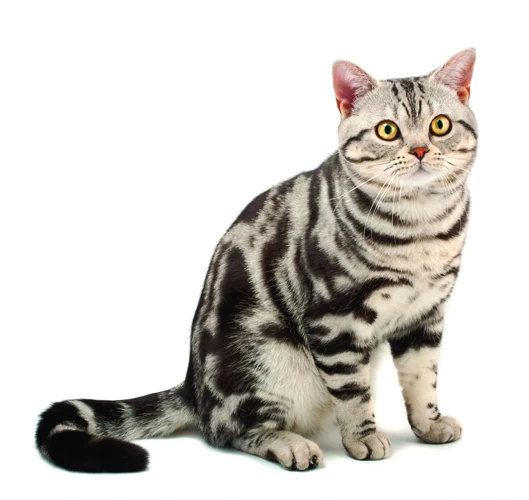
Introducing a dog to your household can be a stressful and uncertain experience, especially if you already have a cat. But what if you have an American Shorthair cat? Will they be able to get along with a new canine companion? In this section, we’ll explore the factors that can influence interactions between American Shorthair cats and dogs. We’ll also provide tips on how to properly introduce them and what signs to look for to ensure a healthy and happy relationship between the two pets.
Introducing an American Shorthair Cat to a Dog
Introducing an American Shorthair Cat to a dog can be a delicate process, so it’s important to take things slowly. Here are some tips to help make the introduction go as smoothly as possible:
1. Start with Smells
Before introducing an American Shorthair cat and a dog, allow them to get familiar with each other’s scents. This can be done by swapping bedding or toys between the two animals.
2. Keep Each Animal Separated
During the first few days of the introduction process, each animal should be kept in a separate room. This will give them a chance to get adjusted to their new surroundings.
3. Use a Barrier
After 3 or 4 days, the pets can be introduced to each other through a barrier. This can be a baby gate or a screen door. Allow the pets to sniff each other and to become more comfortable with one another with a barrier to help prevent any aggressive behavior.
4. Supervise the Face-to-Face Meeting
Once the cats and dogs are used to each other’s scent, allow them to meet face-to-face, but under close supervision. Make sure to always be present and ready to intervene if necessary.
5. Provide Safe Spaces
Both pets should have a safe place to retreat to, such as a crate or a separate room, in case they feel threatened. Make sure both pets have their own space and don’t disturb one another.
6. Be Patient
The introduction process can take time, so be patient. Remember to praise and reward both pets for positive behavior and don’t get discouraged if it takes a while for them to fully adjust to each other.
By following these tips and giving your pets time to adjust, you can help ensure that your American Shorthair cat and dog will get along well together.
Supervise the Dog-Cat Interactions
Ensuring a safe environment during introductions between American Shorthair cats and dogs is crucial. Supervision is essential to preventing any unhealthy interactions between the two pets. When first introducing a cat to a dog, it may be helpful to have them on leashes and allow them to interact while being closely monitored.
One way to supervise dog-cat interactions is to use a separate space for the cat that the dog cannot access, such as a closed room or crate. This allows the cat to feel safe and secure while the dog can still be present in the same room.
Another method of supervision is to keep the dog on a leash and allow the cat to come and go as they please. This way, the cat can approach the dog on their terms and have an escape route if needed.
It’s important to never force the interaction between the two animals. If either the cat or dog seems to be uncomfortable or stressed, it’s best to end the interaction and try again later.
Additionally, it’s essential to teach the dog basic obedience commands and to enforce rules such as no chasing or harassing the cat. It’s also important to provide each pet with their own space and resources, such as separate food and water bowls and separate beds or resting areas.
By supervising the interactions between American Shorthair cats and dogs and providing a safe and secure environment, you can help ensure a happy and peaceful coexistence between your pets.
| Supervision Tips for Dog-Cat Interactions |
|---|
| 1. Keep the cat in a separate space or crate |
| 2. Alternatively, keep the dog on a leash while allowing the cat to come and go as they please |
| 3. Never force the interaction betweem pets |
| 4. Teach the dog basic obedience commands and rules |
| 5. Provide each pet with their own space and resources |
Signs of Unhealthy Dog-Cat Relationships
When introducing an American Shorthair cat to a dog, it’s essential to observe their interactions closely. A good relationship between a cat and a dog can take time to develop, but if they don’t get along, it can be dangerous for both pets. Here are some signs of unhealthy dog-cat relationships to watch out for:
- Aggression: Signs of aggression from either the dog or cat can indicate an unhealthy relationship. Snarling, growling, hissing, biting, or scratching are all signs that the two pets are not getting along.
- Fear: If the cat appears fearful or anxious around the dog, this could signify a negative relationship. Watch for signs of stress, such as pacing, hiding, or cowering.
- Chasing: Dogs have a natural prey drive and may enjoy chasing cats. While this can be playful behavior, it can also lead to injury for the cat. If the cat is running away or appears distressed, this is not a healthy dynamic.
- Territorial behavior: Cats are territorial creatures and may become aggressive if they feel their space is being invaded by a dog. If the cat is hissing, swatting, or even attacking the dog, this is a sign that the dynamic needs to change.
- Urination: If your cat starts urinating outside of the litter box after a new dog is introduced, this could be a sign of stress and negative feelings towards the dog.
If you notice any of these behaviors, it’s essential to intervene and address the situation. Keep the pets separated and slowly reintroduce them while monitoring their interactions. If the problem persists, consider seeking advice from a professional animal behaviorist to help resolve the conflict before it escalates.
How American Shorthair Cats Get Along with Other Pets
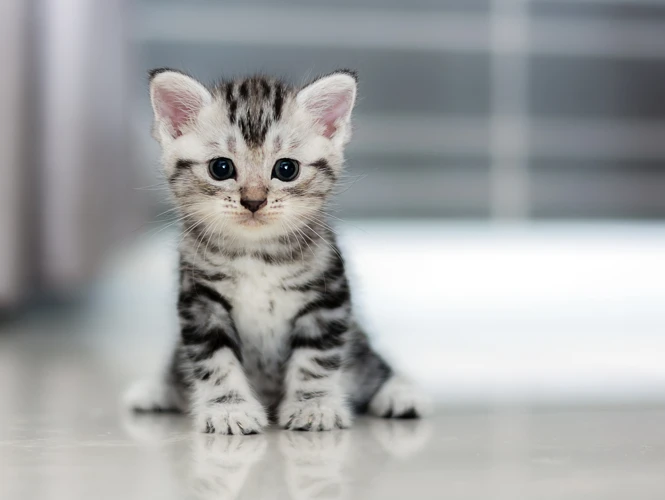
If you are an American Shorthair cat owner who is considering adopting another pet or already has other pets in your household, you may wonder, “Will my American Shorthair cat get along with them?” Fortunately, American Shorthair cats are generally sociable and adaptable pets, and they can form strong bonds with other animals. However, different factors can affect how American Shorthair cats interact with other pets. Let’s explore these factors in more detail.
Rabbits
American Shorthair cats have unique personalities that make them adaptable to different environments and situations. As a result, they can get along well with a variety of other household pets, including rabbits. However, introducing a rabbit to an American Shorthair cat requires careful planning and supervision.
Introducing an American Shorthair Cat to a Rabbit: When introducing an American Shorthair cat to a rabbit, it is important to keep both animals in separate rooms at first. This allows them to become familiar with each other’s scent and presence. Gradually, the door can be opened to allow the cat and rabbit to interact. It is essential to supervise the interactions closely, to ensure that the cat does not exhibit aggressive behavior towards the rabbit.
Supervising the Cat-Rabbit Interactions: As with any new pet introduction, it is important to supervise the interactions between an American Shorthair cat and a rabbit closely. The cat may exhibit predatory behavior towards the rabbit, especially if the cat has not been exposed to rabbits before. If the cat begins to show signs of aggression towards the rabbit, it is essential to separate them immediately.
Signs of Unhealthy Cat-Rabbit Relationships: If an American Shorthair cat and a rabbit do not get along, it will be evident in their behavior towards each other. Signs of an unhealthy relationship include chasing, growling, hissing, or swatting. If these behaviors are observed, it is best to separate the animals and seek professional advice from a veterinarian or animal behaviorist.
To summarize, American Shorthair cats and rabbits can coexist peacefully if introduced correctly and supervised. It is important to take the necessary precautions to ensure that both pets feel safe and secure in their environment. By following these steps, American Shorthair cat owners can provide a loving and harmonious home for all of their pets.
| Introducing an American Shorthair Cat to a Rabbit | Supervising the Cat-Rabbit Interactions | Signs of Unhealthy Cat-Rabbit Relationships |
|---|---|---|
| Keep both animals in separate rooms at first. | Supervise the interactions closely. | Chasing, growling, hissing, or swatting. |
| Allow them to become familiar with each other’s scent and presence. | Separate them immediately if the cat shows aggression towards the rabbit. | Seek professional advice from a veterinarian or animal behaviorist. |
| Gradually open the door to allow the cat and rabbit to interact. |
Birds
When it comes to American Shorthair cats and birds, careful consideration needs to be taken before introducing them. This breed of cat is known for their strong hunting instincts, which may put smaller pets like birds in danger. However, with proper supervision, introduction, and training, it is possible for American Shorthairs to coexist peacefully with birds.
Factors to Consider When Introducing an American Shorthair to a Pet Bird
Before introducing an American Shorthair cat to a pet bird, it is important to consider a few factors. These include:
- The age and temperament of the cat
- The species and personality of the bird
- The current living space of both pets
It is important to supervise their interactions closely, especially in the beginning, to prevent any accidents or injuries.
Introducing an American Shorthair to a Pet Bird
Introducing an American Shorthair cat to a pet bird should be done gradually. The first introduction should be done with the cat in a separate room and the bird in its cage, allowing them to observe each other from a distance. Over time, allow the cat to get closer to the cage while still supervised.
Once they seem more familiar with each other, you can try letting the bird out of its cage while the cat is nearby and still supervised. Be sure to give the bird plenty of space to fly away if it feels threatened.
Supervising Interactions between American Shorthairs and Birds
Whenever the American Shorthair cat and pet bird are together, they should be supervised closely. The cat should never be left alone with the bird, as even the most docile cat may still succumb to their hunting instincts.
Signs of Unhealthy Cat-Bird Relationships
Signs of an unhealthy relationship between an American Shorthair cat and a bird include the cat exhibiting signs of aggression towards the bird, such as stalking, chasing, or attacking. If these signs are observed, it may be necessary to keep the two pets separated and consult with a veterinarian or animal behaviorist for guidance.
| Positive Behavior between American Shorthair Cats and Birds | Negative Behavior between American Shorthair Cats and Birds |
|---|---|
| -Curiosity from a distance -Contentedly ignoring each other -Sitting calmly in the same room |
-Aggression towards the bird -Stalking the bird -Attacking the bird |
As with any introduction between American Shorthair cats and other pets, patience, diligence, and cautious optimism is key for a successful relationship. It is important to respect each animal’s space and privacy, provide equal treatment, and prioritize their safety above all else.
Reptiles and Fish
When it comes to keeping American Shorthair cats with reptiles and fish, there are some factors to keep in mind. As natural predators, cats have a strong hunting instinct and may see small animals like fish and reptiles as prey. However, this doesn’t mean that cats and these animals can’t coexist peacefully. With some careful precautions, it’s possible for them to share the same living space.
Here are some important tips for introducing American Shorthair cats to reptiles and fish:
- Separate Living Spaces: It’s crucial to make sure that your cat, reptile, and fish all have their own separate areas to live in. Fish should be kept in an aquarium or fish tank that’s securely covered, while reptiles should be kept in a terrarium or enclosure with a tight-fitting lid. This will prevent your cat from being able to physically harm the other pets.
- Supervise Interaction: While your cat and other pets are in the same room, keep a close eye on them to ensure that they don’t interact in an unsupervised manner. If you notice your cat displaying aggressive behavior, separate the pets immediately.
- Slow Introductions: When introducing your cat to reptiles or fish, do so slowly and gradually. Allow your cat to sniff around the tank or terrarium while keeping a close eye on their behavior. If your cat displays aggressive tendencies, separate them immediately. Over time, your cat may become accustomed to the presence of the other animals.
- High Shelves: Consider placing fish tanks and terrariums on high shelves or other areas that your cat can’t easily access. This will provide an extra layer of protection for your other pets.
While cats and small animals like fish and reptiles may not seem like a natural match, it is possible to help them coexist peacefully. By providing separate living spaces, supervising interactions, and making introductions gradually, pet owners can create a safe and happy environment for all their animal companions.
Common Problems when Introducing American Shorthair Cats to Other Pets
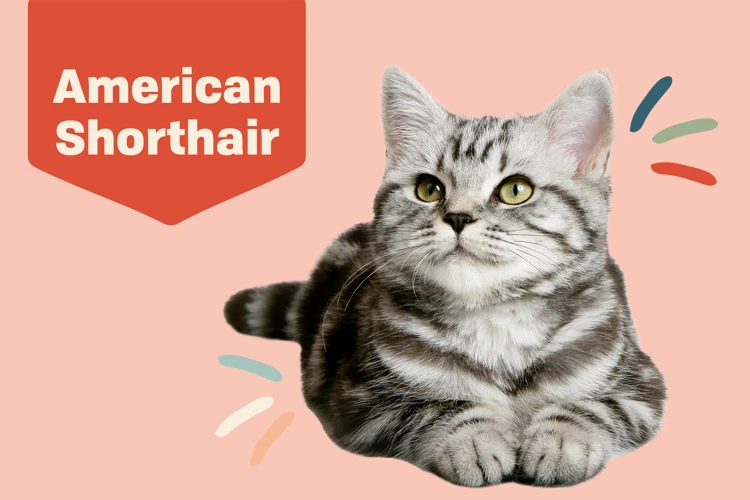
For all the joys that come with adding a new furry friend to your household, introducing American Shorthair cats to other pets can have its challenges. While the relationship between different pets is largely unpredictable, there are common problems that can arise during the introduction process that can be perplexing for pet owners. Let’s explore some issues that often arise when introducing American Shorthair cats to other pets and discuss ways to overcome them.
Spraying and Urine-Marking
When introducing American Shorthair cats to other pets, spraying and urine-marking can be a common problem. This territorial marking behavior is more commonly seen in male cats, but females can also do it. The behavior occurs when cats feel threatened or stressed, and they spray urine on objects or surfaces in an attempt to mark their territory.
Causes of Urine-Marking:
| 1. Stressful Environment | A stressful living environment can trigger urine-marking behaviors. A cat may feel insecure or threatened by the presence of other pets in the home. |
| 2. Sexual Maturity | Un-neutered male cats are more prone to spraying and marking their territory. A cat may feel the need to mark his territory to attract females. |
| 3. Medical Issues | In some cases, medical conditions such as urinary tract infections or bladder stones can cause a cat to urinate outside the litter box. It is important to rule out any underlying medical issues. |
Dealing with Spraying and Urine-Marking:
To address the issue of spraying and urine-marking, it is important to identify the underlying cause. Here are some tips to deal with this problem:
| 1. Neutering/Spaying | This can help decrease the urge to mark territory. Neutering or spaying your cat at an early age can also prevent the behavior from developing. |
| 2. Environmental Changes | Provide a comfortable and secure living environment for your cat. This can include things such as providing hiding spaces, scratching posts, and plenty of toys to play with. |
| 3. Training and Positive Reinforcement | Training your cat to use the litter box can help prevent urine-marking behaviors. Positive reinforcement techniques, such as rewarding your cat when they use the litter box, can be effective. |
| 4. Medical Treatment | If your cat is suffering from a medical condition that is causing the behavior, it is important to treat the condition as soon as possible. |
Dealing with spraying and urine-marking can be a difficult task, but it is important to remain patient and consistent in your approach. By identifying the underlying cause of the behavior and taking steps to address it, you can help your American Shorthair cat live harmoniously with other pets in your home.
Fighting
When introducing an American Shorthair cat to other pets, one common problem is the risk of fighting. This can happen even when introducing the cat to animals of the same species, such as another cat.
Causes of Fighting:
- Feeling threatened or territorial
- Food competition
- Fear or anxiety
- Lack of socialization and training
Signs of Fighting:
- Hissing, growling, or loud meowing
- Swatting with paws or claws
- Puffed-up fur and arched backs
- Biting and scratching
It is important to take steps to prevent fighting, as it can lead to injury for both your American Shorthair cat and the other pets.
Preventing Fighting:
- Ensure each pet has their own space and resources, such as food and water bowls, toys, and beds
- Provide adequate training and socialization for all pets
- Supervise interactions between pets, especially during the first few weeks of introduction
- Consider using pheromone diffusers to help reduce anxiety and stress
- Address any underlying behavioral or health issues that may be contributing to the fighting
If fighting does occur, it is important to separate the pets and seek help from a veterinarian or animal behaviorist. In some cases, medication or professional training may be necessary to help improve the relationships between your American Shorthair cat and other pets.
Remember, the key to successful introductions and peaceful coexistence between pets is patience, training, and respect for each animal’s individual needs and preferences.
Territory Issues
One of the most common issues that can arise when introducing American Shorthair cats to other pets is territory issues. Cats are territorial animals and they can become very possessive of their living space. Here are some common territory issues you might encounter when introducing an American Shorthair cat to other pets:
- Spraying and Urine-Marking: When the American Shorthair cat feels like her territory is being threatened, she may start spraying or urine-marking in order to establish her dominance. This can be extremely unpleasant for owners to deal with.
- Fighting: Another common territorial issue is fighting between pets. When the American Shorthair cat feels like her territory is being invaded, she may lash out and start fighting with the other pet in order to defend her space.
- Stealing Food: American Shorthair cats can quickly become possessive of their food and may start stealing food from other pets if they feel like their territory is being invaded.
- Chasing: Cats can become very territorial about certain areas of the house, and may chase other pets away from those areas if they feel like their territory is being threatened.
Territory issues can be difficult to deal with, but there are ways to mitigate them. It is important to create a safe space for each pet, where they can retreat to when they feel overwhelmed or threatened. This can help to prevent fights and other territorial behaviors.
It is also important to give each pet their own food and water bowls, and to make sure that there is plenty of space for each pet to eat and drink without feeling threatened by the other pet.
Finally, it is important to supervise the interactions between pets and to provide positive reinforcement when they behave well together. With patience and time, it is possible for American Shorthair cats to get along with other pets.
Food Competition
When introducing an American Shorthair cat to other pets in the household, it is important to consider the issue of food competition. Cats, in general, can be territorial when it comes to their food, and introducing a new pet may lead to some confrontations over food.
What is Food Competition?
Food competition refers to interactions between pets over food-related resources such as food bowls, treats, or even water. When cats feel that their food resources are being threatened or diminished by other pets, they may become aggressive or territorial.
How to Manage Food Competition
To minimize the possibility of food competition and avoid any potential conflicts between your American Shorthair and other pets, consider the following tips:
| Tips | Description |
|---|---|
| Designate Separate Eating Areas | Provide each pet with their own designated feeding area to eat in peace without the presence of other pets. This will help reduce the chances of any territorial behavior. |
| Feed Pets Separately | Feed your pets separately, ensuring that each one has access to its own food and water bowl. This will help prevent food competition and reduce the risk of aggressive behavior between pets. |
| Supervise Mealtime | Monitor your pets during mealtime to intervene if necessary. If you notice any signs of aggression or territorial behavior, separate your pets and address the issue. |
| Ensure an Adequate Supply of Food | Ensure that each pet has adequate access to their own food and that bowls are refilled regularly. This will help reduce the chances of any pet going hungry and therefore becoming aggressive over food resources. |
Conclusion
When introducing an American Shorthair cat to other pets, it is important to anticipate and address any potential problems that may arise, including food competition. By providing separate eating areas, feeding pets separately, supervising mealtime, and ensuring an adequate supply of food, you can help reduce the chances of any food-related conflicts and ensure that all your pets can coexist peacefully.
How to Help American Shorthairs Get Along with Other Pets
As a pet owner, it’s important to create a harmonious living environment for all your furry friends. If you have an American Shorthair cat and are looking to introduce them to other pets in your household, there are steps you can take to ensure a smooth transition. With a little patience and effort, you can help your American Shorthair cat get along with other pets and foster a positive relationship. Here are some tips to assist you in creating a peaceful and loving home for all your pets.
Proper Introductions
When introducing American Shorthair cats to other pets, it’s essential to follow proper introductions to avoid unhealthy relationships and territorial issues. It’s important to note that every pet is unique, and they might react differently to the introduction process.
The table below summarizes the proper introduction process for American Shorthair cats.
| Step | Description |
| Step 1 | Separate the new and existing pets for a few days to reduce their anxiety and stress levels. |
| Step 2 | Exchange scents by giving each pet a blanket or toy with the scent of the other pet. |
| Step 3 | Introduce the pets slowly and gradually in a controlled environment. |
| Step 4 | Use treats and positive reinforcement to encourage good behavior. |
| Step 5 | Repeat the introduction process daily, gradually increasing the time the pets spend together. |
| Step 6 | Supervise the pets’ interactions until you’re sure they’re comfortable and relaxed around each other. |
Following these steps will help your American Shorthair cat and other pets to bond positively without territorial issues and competing for resources such as food and litter boxes. Remember to always be patient and allow the pets to dictate the pace of their interactions.
Respect each Animal’s Space and Privacy
When it comes to introducing American Shorthair cats to other pets, respecting each animal’s space and privacy is crucial for a harmonious pet household. To do this effectively, consider the following tips:
- Create designated spaces: Each pet should have their own space where they can retreat to when they need some alone time or want to relax. This could be a separate room, a crate or a designated bed. Make sure that your pets have plenty of room to move around in their designated space.
- Don’t force interactions: Just because you’re keen to see your pets become best friends doesn’t mean they will be eager to do so. It’s crucial to let your pets set the pace when it comes to interactions. Don’t force your pets to interact if they seem uninterested or uncomfortable. If they want to interact, they will do so on their own terms.
- Keep their food and water separate: Some pets might get territorial over their food and water bowls; it’s essential to give each pet their own bowls and keep them separate from the others. This will also help prevent food competition-related problems.
- Provide separate litter boxes: If you have multiple cats, each of them should have their own litter box. Dogs should have different areas for going to the bathroom as well. This will help avoid any territorial conflicts over bathroom usage.
- Give each pet equal attention: All of your pets should feel equally loved and appreciated. Give each pet individual attention, including playtime and cuddles. This will help prevent jealousy and competition over your attention.
By respecting each animal’s space and boundaries, you can create a more harmonious pet household. Remember to take things at your pet’s pace, and never force them into interactions they’re not comfortable having. With patience and respect, your American Shorthair cat can live happily with other pets in your home.
Training and Socialization
To help American Shorthair cats get along with other pets, proper training and socialization is key. It’s important to start socializing kittens with other animals and people while they are young. This helps to ensure that they grow up feeling comfortable and confident around other pets.
One way to socialize American Shorthair kittens is to expose them to different animals and people during playtime. Let them interact with other cats, dogs, and people in a controlled and supervised environment. This will help them to learn how to interact appropriately with other pets, and it will also help them to develop social skills.
Another effective method is to use desensitization techniques. This involves gradually exposing your American Shorthair cat to other pets over a period of time, starting with brief and controlled introductions and gradually increasing the length and intensity of the interactions.
In addition to socialization, training is also important for helping American Shorthair cats get along with other pets. Training your pets to have good manners, such as not jumping on other pets or not chasing birds, will help them to be more accepting and respectful of other animals.
One approach to training is positive reinforcement, which involves rewarding your cat for good behavior. For example, when your American Shorthair cat interacts calmly and politely with another pet, praise them and offer them a treat. This will reinforce these positive behaviors and help to encourage them.
Training and socialization are crucial for helping American Shorthair cats get along with other pets. It requires patience, consistency, and a commitment to setting your pets up for success. By taking the time to socialize and train your pets, you can help to ensure that they have a positive and harmonious relationship with other animals in the household.
Here are some additional tips for training and socializing American Shorthair cats with other pets:
- Start socializing your cat at a young age, ideally between 3-14 weeks.
- Use controlled environments to introduce your cat to other pets, such as a separate room or a pet carrier.
- Gradually increase the intensity and duration of interactions between your cat and other pets while monitoring their behavior.
- Use positive reinforcement techniques to reward good behavior.
- Seek the advice of a professional trainer or behaviorist if you’re having difficulties.
Equal Treatment for All Pets
When it comes to ensuring that all pets in the household get along, equal treatment is key. This means providing each pet with the same amount of attention, love, and resources. One way to ensure equal treatment is by creating a schedule for feeding, grooming, and playing with each pet. This can be especially important when introducing a new pet to the household.
To further emphasize the importance of equal treatment, consider creating an evaluation chart for each pet. This can include different categories such as feeding habits, exercise needs, and affection level. By tracking each pet’s needs and habits, you can ensure that each animal receives the same amount of attention and care.
Below is an example of an evaluation chart for your American Shorthair cat and other pets in the household:
| Pet | Feeding Habits | Exercise Needs | Affection Level |
|---|---|---|---|
| American Shorthair Cat | Eats dry food twice a day, with occasional wet food as a treat | Needs daily playtime, but also enjoys lounging in sunny spots | Enjoys being petted and cuddled, but only on her terms |
| Dog | Eats wet food twice a day | Needs daily walks and trips to the park | Enjoys belly rubs and playing fetch |
| Rabbit | Eats hay and vegetables daily | Needs a large enclosure to hop around in | Enjoys being held and stroked gently |
| Bird | Eats seeds and fruit daily | Needs daily flying time outside of their cage | Enjoys singing and being talked to |
By following this evaluation chart, you can ensure that each pet’s individual needs are met, leading to a happier and more harmonious household. Remember, equal treatment doesn’t mean treating each pet exactly the same, but rather providing them with the specific care and attention they require.
Conclusion
In conclusion, it’s important to keep in mind that while American Shorthair cats generally have a good disposition and are friendly, there are many factors that can affect how they interact with other pets. Introducing a new pet can be a stressful experience for your American Shorthair, which is why it’s crucial to take things slowly and carefully. Always supervise their interactions and be on the lookout for any signs of problems, such as aggression or territorial behavior.
When introducing your American Shorthair to another pet, it’s important to be patient and take things gradually. Follow the proper introduction protocol and always supervise their interactions. Additionally, make sure each pet has their space and privacy, and avoid showing favoritism or inequality among your pets. Training and socialization can also help improve your American Shorthair’s interactions with other pets.
If you do experience problems when introducing your American Shorthair to other pets, seeking the help of a veterinarian or animal behaviorist can provide personalized advice and solutions to address the specific issues you are facing.
Overall, with time, patience, and proper care, your American Shorthair can develop positive relationships with other pets in your household. By following these tips, you can help ensure a harmonious and happy environment where all of your furry friends can thrive together.
Frequently Asked Questions
Can American Shorthair cats live with other pets?
Yes, American Shorthair cats can get along with other pets, but it depends on the individual cat’s personality and the way they are introduced to other animals.
How do American Shorthair cats usually get along with other cats?
American Shorthair cats can get along with other cats if they are introduced slowly and calmly. It is important to supervise their interactions and watch for any signs of aggression.
What should I do if my American Shorthair cat is fighting with another pet?
If your American Shorthair cat is fighting with another pet, separate them immediately. It is important to identify the cause of the fight and address any underlying issues. Consult with a veterinarian or animal behaviorist if necessary.
Can American Shorthair cats live with dogs?
American Shorthair cats can live with dogs if they are introduced properly and supervised. It is important to remember that not all cats and dogs will get along, and it depends on the individual animals’ personalities.
How do I introduce my American Shorthair cat to a new dog?
The key to introducing an American Shorthair cat to a new dog is to do it slowly and calmly. Start by allowing them to smell each other through a closed door, and gradually increase their interactions under close supervision.
Can American Shorthair cats live with rabbits?
It is possible for American Shorthair cats to live with rabbits, but it depends on the individual animals’ personalities. Always supervise their interactions and provide separate spaces for each pet.
Do American Shorthair cats get along with birds?
It is not recommended to keep American Shorthair cats with birds as housemates. Even well-behaved cats have a strong prey drive and may see birds as a natural hunting target.
What are territorial issues in cats?
Territorial issues in cats involve conflicts over space and resources. It is important to provide ample resources such as food, water, and litter boxes to each pet and to monitor their behavior to prevent territorial aggression.
Can American Shorthair cats be trained to get along with other pets?
Yes, American Shorthair cats can be trained to get along with other pets through positive reinforcement, socialization, and careful introductions. Consulting with a professional cat behaviorist can also be helpful.
What should I do if my American Shorthair cat is spraying or urine-marking?
If your American Shorthair cat is spraying or urine-marking, it may be a sign of stress, anxiety, or an underlying medical condition. Consult with a veterinarian or animal behaviorist for advice on how to address this behavior.




